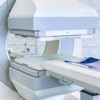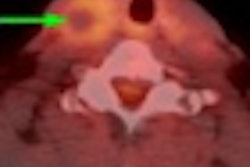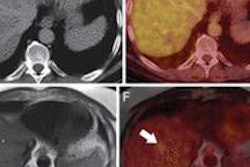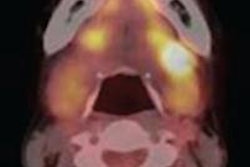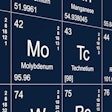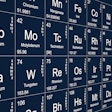Several newly identified markers could provide valuable insight into predicting the risk of ruptured abdominal aortic aneurysms (AAA).
FDG-PET/CT imaging showed that dense white blood cells in the outermost connective tissue in the vascular wall, increased C-reactive protein, and a loss of smooth muscle cells in the middle layer of the vascular wall are all factors that may indicate AAA rupture, according to new research published in the Journal of Nuclear Medicine (October 2013, Vol. 54:10, pp. 1740-1747).
Lead author Audrey Courtois, PhD, from the University of Liège in Sart-Tilman, Belgium, and colleagues performed FDG-PET/CT on 18 patients with AAA diagnosed by ultrasound. Ten of the patients had no uptake of FDG, while eight had positive uptake of the radiopharmaceutical.
Biopsies were then acquired from each of the patients. For patients with positive uptake, tissue was removed from the uptake site and also from a distant negative site of the aortic wall.
The tissue from areas of positive FDG uptake had an increased number of inflammatory cells in the outermost connective tissue, a high level of C-reactive protein, and a reduction in smooth muscle cells, compared with the biopsies from areas without uptake, the researchers found.
"These data suggest that a PET scan with positive FDG uptake provides diagnostic support to proceed without delay to aneurysm surgery, despite a person's age or operative risk," Courtois said in a statement. "However, the absence of FDG uptake at the level of the aneurismal aortic wall can help us make a safe decision to avoid unnecessary surgery and decrease the burden of healthcare costs."

